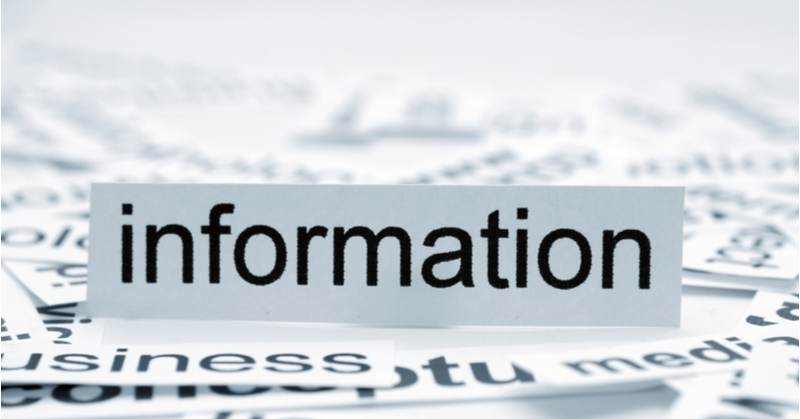COVID-19 drove many businesses to encourage remote work. However, many thought leaders are predicting that “work from home” will continue long past the pandemic. As organizations continue to embrace this type of work arrangement, many workers are thriving at #WFH.
I recently saw a presentation by Rob Smith of Point7Seconds that spoke about the quadrants of organizational work - documents, communication, tasks, and relationships. Rob’s presentation, although not mentioning working from home, starting me thinking about the need to manage information in each of these four quadrants to truly make the #WFH environment effective. Here are information and best practices for managing information in each of these four quadrants.
1. Documents
Documents come in various types and typically (and unfortunately) are stored in many places. To be successful in the WFH environment there is a huge need for documents to be digitized, centralized and democratized. Paper documents are available ONLY to those physically with the piece of paper and in WFH I am quite certain employees sit a little further than 6 feet apart. This would mean equipping employees with a desktop scanner or with scanning apps for their mobile devices.
What is more typical is that WFH employees create on their computer. The issue arises when these documents are stored on their hard drives and are only available to the person with that local machine.
The solution to democratizing documents is to first digitize all paper documents and then to store all documents in a cloud solution. There are many cloud storage solutions out there, but the two primary solutions that are discussed are Google Drive and Microsoft’s SharePoint. I have used the Microsoft product for several years both as an accountant and as a member of the Woodard team and I recommend SharePoint to my both my clients and the accountants I work with at Woodard because of the ease of its use. SharePoint allows documents to be easily democratized to all team members, but also allows permission setting to restrict access as needed.
Here are some best practices in document storage.
- When needed, run document images (paper bills, etc.) through optical character recognition (OCR) and index them for searchability
- Use company-managed cloud backup with utilities on each local workstation
- Sync each computer’s Desktop, Documents and Downloads folders to your cloud storage systems
- Use folder mapping for OneDrive or other non-collaborative folders
- Add a product designed for collaboration (such as Microsoft 365 Teams) for discussions around documents
2. Communication
The communication factor to me is probably the most important factor, but it is also the one that tends to get overlooked the most. I have been in a WFH environment for over 10 years now with various entities and I know how challenging it can be depending on how much of the workforce is remote. When I was a sole remote worker amongst a team of on-premises workers, I often felt overlooked and forgotten. However, when the entire team transitioned to remote work and the entire team embraced #WFH, we all found a greater camaraderie than being together in an office.
What is the biggest step in communication as a remote team? Eliminate email! That sounds counterproductive as email is the universal communication tool in business. In this case, I am speaking about internal communications between team members. Emails become information silos as only those included in the email are privy to the information.
Instead, adopt a team communication tool. I recommend Microsoft’s Teams for all internal communication. This product allows you to build structure for these conversations using “teams” with sub-divisions called “channels” within each team. Once this structure has been designed and built, you are then able then able to assign permissions to each team and channel. By assigning all team members to a team or channel, you democratize knowledge throughout your organization. But, you can also limit permissions to only certain team members as appropriate.
Here are some best practices about communications.
- Create your company’s “rules of the road” and train the team to use them
- Provide ongoing training to reinforce your best practices
- Use “tags” (@ with their name) to call someone’s attention to essential posts or information
- Define usage of both important & urgent tags
- Provide guidelines on when responses posts are expected both for when someone is tagged and for when a post is marked important or urgent
- Provide guidelines for reading all other posts (i.e., “reading the newspaper”)
3. Tasks
Tasks are the “things” you need to do and usually documents and/or team communications before the tasks can be completed. In a WFH environment you cannot simply walk over and hand your co-worker a file to tell them to start working a task. Ideally, task assignment should be made digitally and through a task management solution that allows progress tracking and gives the entire team visibility.
I have been in various organizations that have used tools as simple as excel to keep track of tasks and as detailed as something like XCM Solutions. I recommend starting simple and then developing a more robust system as needed. There are a number of tools to look at ranging from Microsoft’s ToDo (included in your Microsoft 365 subscription) to “Work” which is part of QBOA.
Whatever tool you choose, here are items that should be considered and be part of the system:
- Due dates - always need to know when things are due
- Recurring / Cyclical task creation – especially important in bookkeeping tasks and even tax prep
- The ability to assign various steps to different people – many tasks have subtasks and are not all done by the same person
- The ability to know who assigned the task – important to know who to ask when clarification is needed
4. Relationships
One area that is often ignored is intentionally maintaining information about relationships. In a WFH environment, you don’t have the opportunity for running into your team in the hallways to chat about clients (which was never a best practice anyway). Creating a repository for information about your stakeholder, whether it be customers, prospects, vendors or employees, is essential to managing your practice.
Although complex and robust solutions exist for managing this knowledge, it isn’t necessary to invest your efforts or your money into one. Instead, a simple solution such as Microsoft’s OneNote can be used to organize information about relationships and is easily accessible by WFH teams.
Best practices for storing information about relationships.
- Make sure that your solution is easily searchable
- Capture and save an image of the person – a screen shot from a web meeting or a headshot from their website
- Include information which allows for more efficient completion of tasks around that person
- Avoid including private, personal and non-relevant information
Managing the Four Factors
Although we all create, store and access the information in these four areas, are we doing it efficiently? In the WFH environment, it is more important than ever that we increase efficiencies. Having the right tools to use at the right time with the right processes will give you a competitive edge.
.png?width=150&height=63&name=TWRlogo-regmark_blueblack%20(1).png)
.png)










Do you have questions about this article? Email us and let us know > info@woodard.com
Comments: